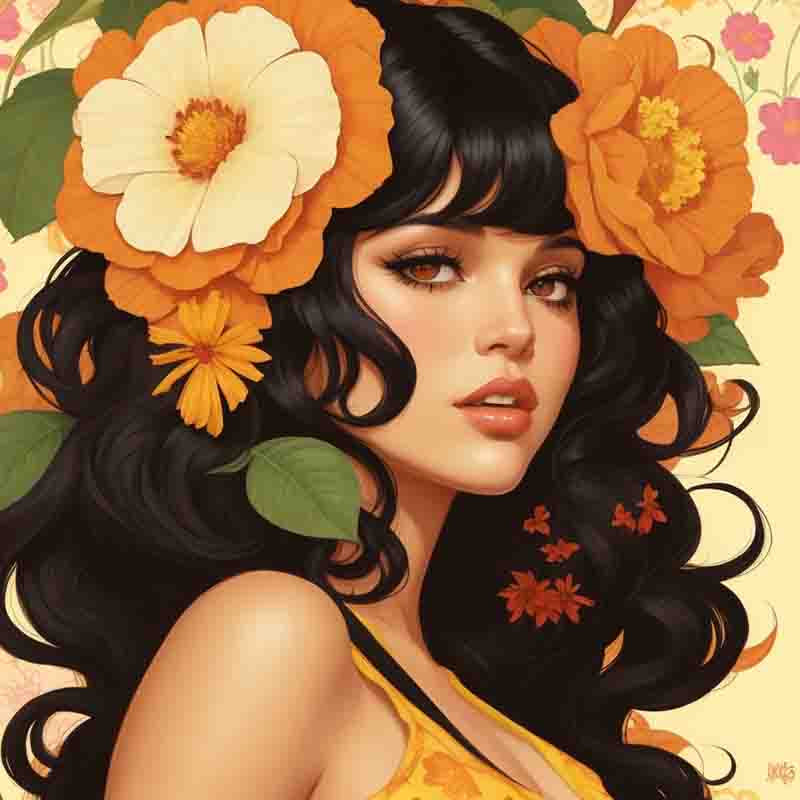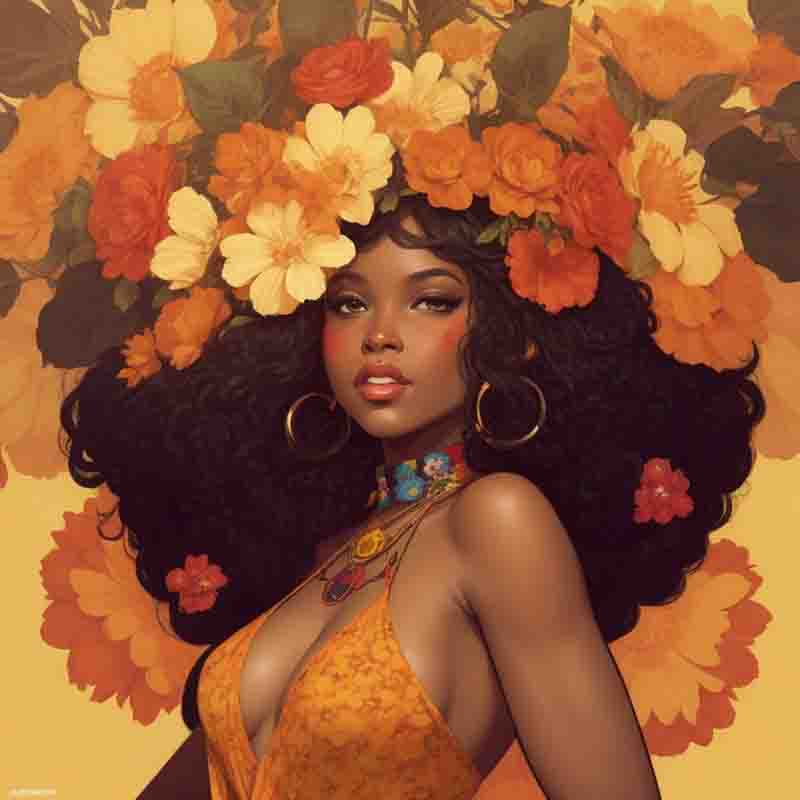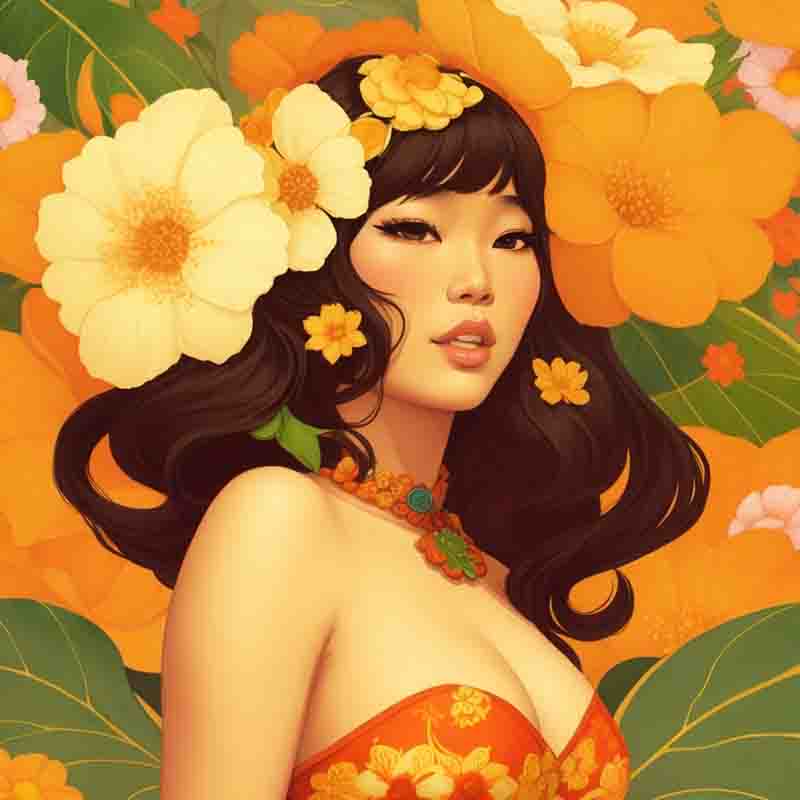In Full Bloom: Embracing the Modern Renaissance of Flower Power
Flower Power encapsulates a captivating cultural and social phenomenon that blossomed during the tumultuous 1960s, specifically within the counterculture movements. This movement became an emblematic expression of the pursuit of peace, love, and unity in the face of societal and political upheavals.

Flower Power is characterized by a nonviolent ethos, embracing the symbolism of flowers as a potent and peaceful tool for activism.
Flower Power is a cultural and social movement that emerged during the 1960s, particularly within the context of the counterculture movements of that era.
It symbolizes a philosophy advocating for positive social change through nonviolent means.
The term became popularized during anti-war protests and is closely associated with the Hippie Movement and the use of flowers as symbols of peace.
In the context of the 1960s, Flower Power was a response to the Vietnam War and a broader desire to end conflicts through peaceful means.
Flower Power was the epitome of the 1960s, embodying the spirit of rebellion, freedom and self-expression. The rejection of traditional norms and the bohemian style reflected the movement's ideals of peace and harmony with nature.
From vibrant and striking visual fine art to psychedelic posters, sculptures and avant-garde performances, numerous artists embraced the values of the movement and incorporated them into their works.
Rooted in genres such as psychedelic rock, folk and blues, flower power music conveyed the philosophy of love and harmony and inspired an entire generation to question authority and campaign for a fairer and more balanced society.
Flowers, often distributed at protests, became powerful symbols of peace, conveying a message of hope and unity.
Flower Power symbolizes a nonviolent approach to protest and activism, often associated with the use of flowers as a peaceful gesture. In a broader sense, Flower Power has become a symbol of unity, environmentalism, and the pursuit of positive change in society.
Flower Power Timeline
Flower Power is synonymous with nonviolent activism, drawing inspiration from figures like Mahatma Gandhi and Martin Luther King Jr.
The movement embraced peaceful protests, sit-ins, and other nonviolent methods to advocate for change.
The use of flowers as symbols of peace exemplified the commitment to nonviolence.
| Time Period | Key Events |
|---|---|
| 1960 | Emergence of the Counterculture Movement |
| 1965 | Term "Flower Power" Coined |
| 1967 | "Summer of Love" in San Francisco |
| 1967 | Iconic Human Be-In in Golden Gate Park |
| 1967 | Beatles Release "All You Need Is Love" |
| 1967 | Anti-Vietnam War March on the Pentagon |
| 1968 | Tet Offensive Heightens Anti-War Sentiment |
| 1969 | Woodstock Festival Becomes a Symbol of Flower Power |
| 1970 | Kent State Shootings Intensify Anti-War Protests |
| 1970s | Flower Power Themes Influence Fashion and Art |
| 1980s | Flower Power Experiences a Nostalgic Revival |
| 1990s | Continued Influence in Popular Culture |
| 2000s | Flower Power Revival in Environmental Activism |
| 2010s | Flower Power Themes in Social Media Movements |
| 2017 | 50th Anniversary of the Summer of Love |
| 2020s | Flower Power's Enduring Legacy in Activism and Art |
This timeline provides a chronological overview of key events in the history of Flower Power, from its emergence in the 1960s to its continued influence in the 21st century.
The Power of Flowers for a Kinder World

Symbolism played a crucial role in Flower Power, with flowers becoming powerful symbols of the movement's ideals.
The Roots of Flower Power
The term "Flower Power" was not merely a catchy slogan; it encapsulated a profound cultural shift.
Coined by poet Allen Ginsberg, it emerged from the fertile ground of the Beat Generation's literary and philosophical explorations.
Ginsberg, a central figure in the countercultural movement, used the phrase to convey a transformative vision that transcended traditional boundaries.
Cultural Context of the 1960s
To understand Flower Power, one must navigate the turbulent waters of the 1960s, a decade marked by civil rights struggles, anti-war protests, and a burgeoning desire for personal freedom.
Flower Power emerged as a response to the prevailing atmosphere of discontent, embodying a rejection of authority and a call for a more inclusive and compassionate society.
Flower Symbolism in History

Flower Power became a unifying force, connecting disparate elements of the counterculture, including political activists, artists, and those seeking a break from the norms of the time.
Flowers have long held symbolic significance in human culture, from ancient traditions to the Victorian era.
Drawing from this rich source, Flower Power has taken up the language of flowers as a means of expressing feelings beyond the spoken word.
Each bloom became a potent symbol, conveying messages of peace, love, and unity.
Flower Power as Symbolic Protest
The symbolic power of flowers manifested prominently in protests and gatherings.
The peace symbol, often adorned with flowers, became an iconic representation of the movement's commitment to nonviolence.
Flowers, wielded as tools of symbolic protest, transformed public spaces into vibrant canvases of dissent.
Peace and Nonviolence
At the heart of Flower Power was a commitment to peace and nonviolence.
The movement embraced the principles of nonviolent activism, drawing inspiration from leaders like Martin Luther King Jr.
Flower Power sought to challenge the status quo and effect change through peaceful means, rejecting the notion that violence could be a catalyst for positive transformation.
Love and Unity
Love, both as a personal ethos and a societal force, was a central tenet of Flower Power.
The movement celebrated universal love, transcending boundaries of race, gender, and nationality.
Flower Power envisioned a world where love and compassion were the guiding forces, fostering a sense of unity and interconnectedness.
Social Change and Activism

The term "Flower Power" itself gained prominence in 1967, reflecting the movement's association with the symbolic power of flowers to convey messages of peace and nonviolence.
Flower Power emerged as a catalyst for social change, inspiring activism on various fronts.
From civil rights to environmental advocacy, the movement encouraged individuals to question societal norms and actively engage in creating a more just and compassionate world.
Flower Power became synonymous with a broader call for societal transformation.
The Summer of Love
The Summer of Love in 1967, centered in San Francisco's Haight-Ashbury district, stands as a pinnacle moment for Flower Power.
Thousands of young people converged, united by a shared vision of peace, love, and artistic expression.
This historic gathering marked the apex of Flower Power's influence, showcasing the movement's capacity to bring about cultural change.
Woodstock Festival
Woodstock, the legendary music festival of 1969, epitomized the convergence of music, art, and activism within the Flower Power movement.
Hundreds of thousands gathered in a spirit of camaraderie, celebrating the ideals of peace and love amidst iconic performances and artistic expressions.
Woodstock became a symbol of Flower Power's enduring impact on youth culture.
Musicians and Artists of Flower Power
The Flower Power movement found a powerful voice in the music of iconic artists.
The Beatles, with their revolutionary sound and lyrics, became synonymous with Flower Power.
Bob Dylan's folk-influenced protest songs addressed social issues, and Janis Joplin's soulful performances embodied the spirit of liberation.
Music became a driving force for change, reflecting and shaping the ideals of Flower Power.
Visionary Flower Power Artists
Visual artists played a crucial role in shaping the aesthetics of Flower Power.
Peter Max, known for his vibrant and psychedelic designs, captured the movement's essence on canvas.
Graphic artist Wes Wilson's intricate posters became emblematic of Flower Power's visual language.
Yoko Ono, both a musician and an avant-garde artist, collaborated with John Lennon to create works that embodied the spirit of experimental creativity associated with the movement.
Flower Power Fashion and Aesthetic
Flower Power fashion embraced a bohemian aesthetic characterized by tie-dye, flowing garments, bell-bottoms, and symbolic accessories.
This distinctive style was a visual representation of the movement's rejection of mainstream norms and a celebration of individuality.
The bohemian look became a form of artistic expression, embodying the free-spirited ethos of Flower Power.
Countercultural Fashion Legacy
The impact of Flower Power fashion extends beyond its original era, influencing contemporary trends and revivals.
Elements of the bohemian look persist in fashion, from music festival attire to everyday streetwear.
The countercultural legacy of Flower Power continues to inspire designers and individuals seeking to express their creativity and nonconformity through clothing.
Communal Living and Flower Power
Communal living was a central aspect of Flower Power's vision for societal transformation.
Experimental communities emerged, driven by a desire to create alternative lifestyles based on shared resources and collective harmony.
These communities sought to break free from the constraints of mainstream society, embodying the movement's ethos in their daily lives.
Digital Communes in the 21st Century
While the physical communes of the 1960s may have faded, the spirit of communal living persists in the digital realm.
Online communities, forums, and collaborative platforms serve as modern-day communes, allowing like-minded individuals to connect, share resources, and collectively pursue common goals.
The influence of Flower Power extends into these virtual spaces, fostering a sense of community and shared values.
Flower Power in Popular Culture
Flower Power's impact on popular culture is encapsulated in its slogans and catchphrases, notably "Make Love, Not War."
These succinct expressions captured the movement's essence and became rallying cries for a generation seeking a shift towards love, peace, and unity.
The enduring resonance of these slogans continues to shape cultural discourse.
Global Impact and Enduring Influence
Flower Power transcended geographical boundaries, influencing diverse cultures globally.
Its impact on subsequent countercultural movements, art, music, and fashion is evident in the enduring influence that continues to shape cultural paradigms.
Contemporary positive change initiatives, driven by ideals synonymous with Flower Power, showcase its ongoing relevance and timeless appeal.
Transformation of Cultural Paradigms
Flower Power's legacy extends beyond its immediate historical context, contributing to the transformation of cultural paradigms.
Its influence can be traced in subsequent countercultural movements, from the punk rock era to the environmentalist movements of the late 20th century.
Flower Power laid the groundwork for a more open-minded and inclusive cultural landscape.
Environmental Advocacy and Sustainability
The environmental advocacy inherent in Flower Power continues to resonate in contemporary discussions on sustainability.
The movement's early emphasis on ecological awareness and a harmonious relationship with the planet has inspired subsequent generations to actively engage in environmental activism.
Flower Power's commitment to a sustainable future remains a guiding principle in the fight against climate change.
Digital Connectivity and Global Activism
In the 21st century, Flower Power's ideals have seamlessly transitioned into the digital age.
Online platforms serve as catalysts for positive change, mirroring the interconnected and global nature of Flower Power.
Digital activism, fueled by the principles of peace and love, has become a powerful force for societal transformation, furthering the movement's enduring impact.
The Ever-Blooming Flower Power Legacy
Flower Power's enduring legacy is a testament to the movement's profound impact on the cultural landscape.
From its roots in the counterculture of the 1960s to its continued influence on contemporary ideals, Flower Power remains an ever-blooming symbol of peace, love, and social change.
The movement's principles, embodied in its art, music, fashion, and communal aspirations, have transcended time, leaving an indelible mark on the collective consciousness.
As we reflect on the Flower Power era, its legacy serves as a reminder of the transformative power of love, unity, and the perpetual quest for a more harmonious world.
Flower Power Reloaded
Flower Power, born in the United States, quickly transcended borders.
The movement's ideals of peace and love resonated globally, fostering a sense of interconnectedness.
In an era marked by international challenges, Flower Power's global impact remains a testament to the universality of its principles.
-
Flower Power Movement: The Flower Power Movement was a cultural and social phenomenon that emerged in the 1960s, advocating for peace, love, and harmony. It became a symbol of nonviolent activism, particularly during anti-war protests.
-
Peace and Love: Peace and love were the central tenets of Flower Power, reflecting a desire for global harmony and a rejection of violence and hatred.
-
Anti-War Protests: Flower Power gained prominence during anti-war protests, where activists adorned themselves with flowers as a symbol of peace and opposition to the Vietnam War.
-
Symbolism of Flowers: Flowers became powerful symbols within the movement, representing beauty, fragility, and the potential for positive change.
-
Nonviolent Activism: Flower Power embraced nonviolent activism as a means of protest and social change, drawing inspiration from leaders like Mahatma Gandhi and Martin Luther King Jr.
-
Environmentalism: Flower Power extended its focus to environmental concerns, advocating for ecological awareness and sustainable living practices.
-
Back-to-Nature Movement: Flower Power was aligned with the back-to-nature movement, encouraging a return to simpler, more sustainable lifestyles.
-
Flower Children: The term "Flower Children" referred to the young people who embraced the ideals of Flower Power, often characterized by their carefree and idealistic approach to life.
-
Flower Power Slogans: Slogans like "Make love, not war" and "Flower Power" encapsulated the movement's ethos and became rallying cries for change.
Unity was a core value embraced by Flower Power. The movement sought to unite people across different backgrounds and ideologies under a common goal of promoting peace and social harmony.
The Positive Vibes of Flower Power
Flower Power continues to inspire individuals to adopt a mindset of empathy, cooperation, and environmental stewardship.
It serves as a reminder that even in challenging times, the beauty of peaceful resistance can cultivate a garden of positive change, promoting a shared vision of a more compassionate and interconnected global community.
Emerging in the midst of a turbulent era marked by social and political upheaval, Flower Power became a powerful countercultural force that captivated the hearts and minds of a generation.
Rooted in the rejection of established norms and fueled by a desire for a more harmonious world, this movement left an indelible mark on history.
Flower Power: FAQ
Are you curious about music, art, technology, fashion, lifestyle, and beer?
If so, then you need to subscribe to the free Likewolf newsletter.
100% privacy. When you sign up, we'll keep you posted.
Unconventional Song Structures
Prog Rock or Simply Prog
